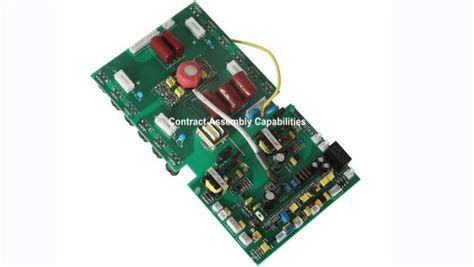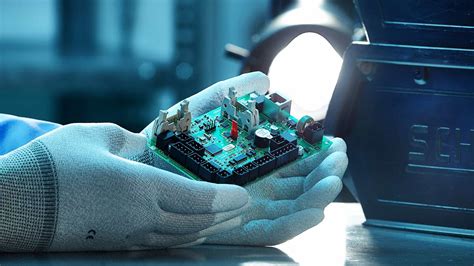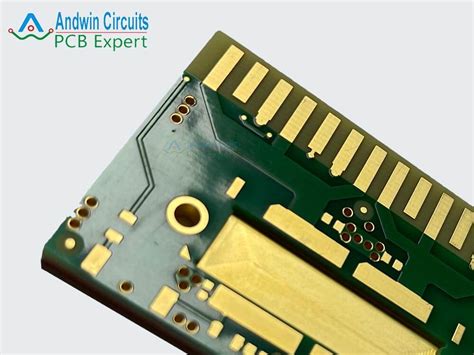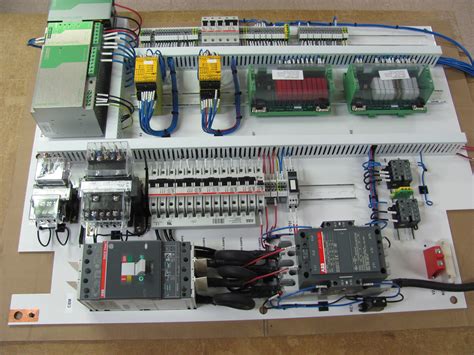Optimizing Contract Electronic Assembly for Efficiency and Quality
Key Takeaways
Optimizing contract electronic assembly is essential for companies looking to enhance both efficiency and quality in their production lines. One of the foremost challenges in pcb assembly is ensuring that every process contributes to the overall productivity without compromising quality. Adopting strategies such as process mapping can spotlight areas where delays often occur. Additionally, integrating automation in repetitive tasks can significantly reduce labor costs and human error. The implementation of best practices tailored to pcba projects ensures that standards are consistently met, leading to high-quality output. Notably, waste reduction strategies such as adopting lean manufacturing principles can help streamline operations, minimizing excess material usage while safeguarding against production bottlenecks. Furthermore, leveraging advanced technologies like real-time monitoring systems not only facilitates quicker decision-making but also improves overall transparency throughout the manufacturing process. By focusing on these key areas, organizations can successfully meet client demands while maintaining a competitive edge in the ever-evolving landscape of contract electronic assembly.
Introduction to Contract Electronic Assembly: Setting the Stage for Optimization
In the landscape of modern manufacturing, contract electronic assembly (CEA) emerges as a pivotal component, particularly in the production of complex pcb assembly projects. As companies look to optimize their operations, understanding the intricacies of CEA becomes essential. This process involves partnering with specialized firms to handle various stages of electronic assembly, from prototyping to full-scale production. By doing so, businesses can leverage the expertise and resources of their partners to enhance their overall productivity.
One significant advantage of pcba is its ability to streamline operations, allowing for quicker turnaround times and improved resource management. However, achieving peak efficiency in contract electronic assembly requires a keen awareness of potential pitfalls and challenges. These can include delays in supply chains, miscommunication between stakeholders, and inconsistent quality levels. Each of these factors contributes not only to productivity loss but also to increased costs.
To effectively address these issues, companies can adopt strategies aimed at reducing waste and enhancing quality assurance protocols. For instance, integrating stringent quality checks at various stages of production ensures that each pcb assembly meets defined standards before moving onto the next phase. Furthermore, utilizing advanced technology such as automation and real-time monitoring systems can significantly enhance productivity on assembly lines.
Understanding these dynamics lays the groundwork for future discussions on optimizing processes within contract electronic assembly. It emphasizes that continuous improvement is not only desirable but necessary for meeting evolving client demands while maintaining competitiveness in today’s market landscape.

Key Challenges in Contract Electronic Assembly and Their Solutions
In the realm of contract electronic assembly, several challenges persist that can significantly impact the efficiency and quality of operations. One of the predominant issues is the complexity involved in PCB assembly processes. As products become more sophisticated, the precision required in PCBA can lead to increased error rates if not managed appropriately. To combat this, employing robust quality control measures throughout each stage of assembly can help mitigate errors effectively.
Another challenge is supply chain inconsistencies, which often lead to delays and increased costs. Establishing strong relationships with suppliers and ensuring clear communication can make a notable difference in maintaining a steady flow of components needed for contract electronic assembly. Managers should consider using just-in-time inventory practices to minimize waste while ensuring that essential components are readily available.
Additionally, training staff on best practices for handling materials and equipment can greatly reduce potential pitfalls associated with assembly errors. Regular training sessions not only enhance workforce competence but also foster an environment of continuous improvement.
“Investing in employee knowledge is investing directly in your product’s quality.”
Finally, integrating advanced technologies like automation and real-time monitoring systems will improve overall productivity in PCB assembly lines. These systems allow for immediate feedback on processes, enabling issues to be addressed proactively rather than reactively.
By recognizing these challenges and implementing strategic solutions, companies engaged in contract electronic assembly can enhance both their operational efficiency and product quality significantly.

Streamlining Processes: Techniques for Enhanced Efficiency
Improving efficiency in contract electronic assembly is vital for meeting the increasingly complex demands of the market. One effective technique to streamline processes is adopting Lean manufacturing principles, which focus on minimizing waste while maximizing value. By identifying non-value-added activities in pcb assembly lines, firms can reallocate resources to areas that enhance productivity. Furthermore, employing automation and advanced machinery can significantly reduce cycle times and improve the consistency of outputs in the pcba workflow. Another approach is implementing a flexible workforce trained to adapt quickly to varying project specifications, which can drastically reduce downtime associated with skill gaps. Standardizing processes across all assembly lines ensures a uniform approach, leading to enhanced quality control and quicker resolution of any discrepancies that arise during production. Continuous performance monitoring and feedback loops also play essential roles in refining techniques, allowing for iterative improvements over time. By embedding these strategies within their operational frameworks, companies can effectively bolster both efficiency and quality in their contract electronic assembly endeavors.

Waste Reduction Strategies in Electronic Assembly Operations
In today’s competitive landscape, waste reduction in contract electronic assembly is crucial for maintaining efficiency and quality. One of the primary strategies involves a thorough analysis of the current pcb assembly processes to identify areas where materials and time are being wasted. Adopting lean manufacturing principles can facilitate this, allowing teams to streamline workflows and minimize excess. Implementing 5S methodology—sort, set in order, shine, standardize, and sustain—can dramatically improve organization on the shop floor, ultimately leading to reduced waste.
Additionally, maintaining a close relationship with suppliers ensures that high-quality components for pcba are sourced consistently, reducing the likelihood of defects that may lead to further waste. Regular training sessions for employees can also empower them to identify inefficiencies and work towards continuous improvement. Monitoring key performance indicators (KPIs) related to material yield and production cycles will provide insights that allow teams to make informed decisions geared toward waste minimization.
As technology advances, incorporating automation into assembly processes can further enhance the ability to reduce waste by ensuring precision in component placement and adherence to established workflows. These combined tactics create an environment where quality products are delivered with greater efficiency, meeting client demands without unnecessary resource expenditure. By prioritizing waste reduction strategies in electronic assembly operations, organizations can not only boost their bottom line but also improve their reputation in the marketplace for delivering reliable pcba solutions.
Implementing Best Practices for Quality Assurance
To enhance quality assurance in contract electronic assembly, it is essential to adopt a series of best practices that focus on meticulous planning and execution. A fundamental aspect of these practices involves the implementation of standard operating procedures (SOPs) that align with industry standards. Ensuring that every team member is trained in these SOPs promotes consistency and reduces the likelihood of errors during pcb assembly. Regular quality checks at different stages of the production process further reinforce this commitment to excellence. Employing tools like automated inspection systems can swiftly identify defects, ensuring that only the highest quality pcba products reach the client.
Moreover, fostering a culture of continuous improvement encourages teams to regularly assess their processes and outcomes for potential enhancements. This can be achieved by utilizing root cause analysis techniques when issues arise, facilitating a proactive approach rather than a reactive one. Feedback mechanisms should also be in place, empowering employees to share insights and innovate practices that optimize efficiency without compromising quality.
Incorporating advanced technologies, such as data analytics and machine learning, can significantly enhance quality assurance protocols. By analyzing production data, manufacturers can pinpoint patterns leading to defects or inefficiencies and address them swiftly. This synergy between human expertise and technological advancements ensures a thorough quality assurance framework that meets—and often exceeds—client expectations in the competitive landscape of contract electronic assembly.
Leveraging Technology to Improve Productivity in Assembly Lines
In the realm of contract electronic assembly, leveraging advanced technology is pivotal for enhancing productivity on assembly lines. By adopting state-of-the-art tools and automation, companies can significantly streamline their pcb assembly processes. For instance, implementing robotic arms for repetitive tasks can reduce human error and increase speed, enabling faster turnaround times for clients. Additionally, utilizing software solutions for inventory management ensures that components are always in stock, thereby minimizing downtime during the pcba process. Integrating machine learning algorithms can further optimize workflow by predicting bottlenecks and offering strategic adjustments in real time. Furthermore, employing quality control technologies such as automated optical inspection (AOI) systems helps maintain high standards and reduces defects in the finished product. Overall, embracing these technological advancements not only improves production efficiency but also enhances the quality of output, thus meeting client demands more effectively while fostering a culture of continuous improvement across assembly operations.
Case Studies: Successful Examples of Optimized Contract Electronic Assembly
In exploring successful implementations of optimized contract electronic assembly, several case studies reveal effective strategies that enhance both efficiency and quality. One noteworthy example involved a leading pcb assembly firm that re-engineered its workflow by adopting an integrated approach to pcba processes. This company utilized real-time data analytics to monitor assembly line performance, allowing for immediate adjustments that minimized downtime and maximized output. Another success story emerges from a manufacturer that streamlined component sourcing by partnering directly with suppliers, leading to reduced lead times and improved materials quality. By implementing automation in repetitive tasks within the pcb assembly process, this company not only achieved consistency but also significantly lowered labor costs. These case studies highlight the importance of adopting modern techniques and technologies within contract electronic assembly, demonstrating how targeted optimizations can lead to substantial improvements in both operational efficiency and product quality, ultimately meeting the evolving demands of clients in a competitive marketplace.
Future Trends in Contract Electronic Assembly: Preparing for Change
As the landscape of contract electronic assembly evolves, industry stakeholders must stay ahead of the curve to maintain competitiveness. One of the primary trends is the increasing demand for flexibility in pcb assembly processes. Companies are looking to adapt quickly to changing client specifications and production volumes, highlighting the importance of agile methodologies. Furthermore, advancements in automation and robotics are streamlining pcba line operations, enabling faster turnaround times without compromising quality. This shift not only optimizes labor costs but also enhances precision in electronic assembly tasks. Another trend is the rising emphasis on sustainable practices within pcb assembly. Manufacturers are increasingly adopting techniques that minimize waste, such as implementing closed-loop systems and recycling components whenever possible. This move toward sustainability not only satisfies regulatory requirements but also appeals to a growing consumer base that prioritizes environmentally responsible production. As these trends gain traction, organizations must prepare to invest in emerging technologies and training programs that equip their workforce with necessary skills, ensuring they remain agile and responsive to future market demands.
Conclusion
In summary, optimizing contract electronic assembly is imperative for companies looking to enhance their operational efficiency and deliver high-quality products to clients. By focusing on pcb assembly processes, organizations can identify and eliminate bottlenecks that may hinder productivity. The integration of advanced technology plays a crucial role in facilitating seamless pcba operations, allowing for real-time monitoring and adjustments. Furthermore, implementing rigorous quality assurance practices ensures that the final products meet stringent industry standards. This holistic approach not only improves outputs but also fosters client satisfaction by consistently meeting delivery timelines and specifications. As the industry evolves, keeping abreast of new trends and methodologies will be essential for sustaining a competitive edge in the contract electronic assembly market. Embracing these strategies will equip manufacturers to navigate challenges efficiently while reinforcing their commitment to excellence.

FAQs
What is contract electronic assembly?
Contract electronic assembly refers to the process where companies outsource their pcb assembly or pcba needs to specialized firms. These firms handle the manufacturing, assembling, and testing processes to ensure high-quality finished goods.
How can I ensure quality in my contract electronic assembly processes?
To ensure quality, it’s essential to implement best practices for quality assurance, such as rigorous testing protocols and compliance with industry standards. Regular audits and feedback loops also contribute to maintaining high production quality.
What are some common challenges faced in contract electronic assembly?
Common challenges include managing supply chain disruptions, ensuring consistent communication with partners, and addressing variations in pcb assembly specifications. These can be mitigated through robust planning and employing effective communication tools.
How can technology improve efficiency in assembly lines?
Leveraging technology such as automation tools, advanced software for project management, and data analytics can significantly enhance productivity and efficiency in pcba operations. These technologies help streamline processes while reducing time-consuming manual labor.
What strategies can be employed for waste reduction?
Implementing waste reduction strategies involves optimizing resource usage through lean manufacturing principles. Focus on minimizing scrap material during the pcb assembly process and regularly reviewing operational workflows to identify areas of improvement.







